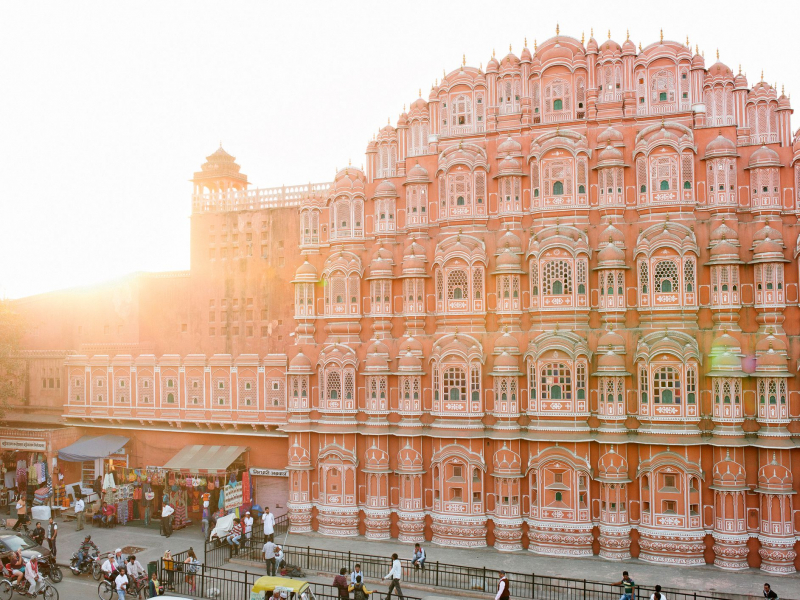Hawa Mahal
Hawa Mahal is an Indian palace located in the city of Jaipur. It is located on the outside of Jaipur's City Palace and extends to the Zenana, or women's rooms, and is made of red and pink sandstone. Maharaja Sawai Pratap Singh, the grandson of Maharaja Sawai Jai Singh, the founder of Jaipur, India, completed the building in 1799. He was so fascinated by Khetri Mahal's distinctive structure that he erected this great and ancient palace.
This palace is a five-story, 15-meter-high pyramidal-shaped edifice. The structure's upper three stories are the breadth of a single room, with patios in front of the first and second floors. From the street, the front elevation looks like a honeycomb with little portholes. Miniature windows, carved sandstone grills, finials, and domes adorn each porthole. It resembles a jumble of semi-octagonal bays, giving the monument its distinct aspect. The building's interior face, on the rear side, is made up of rooms with pillars and hallways with little adornment that extends all the way to the top level.
Built of red and pink colored sandstone in line with the décor of the city's other monuments, its color bears witness to Jaipur's moniker of "Pink City." Its façade, which has 953 niches with beautifully carved jharokhas (some of which are made of wood), stands in sharp contrast to the structure's simple back side. Maharaja Jai Singh's favorite resort, the Hawa Mahal, was also known as his chef-d'oeuvre due to its elegance and built-in interior. The breeze coming through the tiny windows of the façade created a cooling effect in the rooms, which was increased by the fountains placed in the center of each chamber. The above makes this place become one of the most beautiful historical sites in India.











